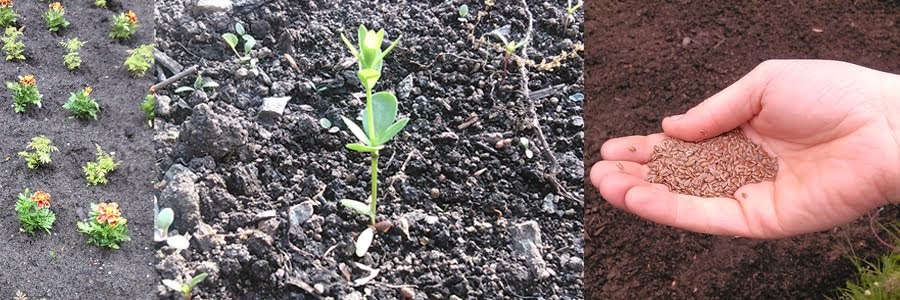Another week has gone by, and tonight I'll be back in the Flax Field, eager to see if the flax that we planted last week is up yet.
I know it's a good idea to keep a garden journal -- and I'm always happy when others do so, for my benefit -- so here are a few notes from the season so far....
The weather in May seemed mainly fine, with a few bouts of heavy rains (over the weekends, of course); not too hot so we didn't need to water.
The wheat, oats and einkorn were already 8-12" high by May 21st, when we prepared the seed beds for the flax by raking them to a fairly fine tilth.
We left the beds over the weekend, and had more rain; by the 28th, there were suddenly many 'volunteer' flax plants from last year's crop that hadn't been there in the previous week. So, I guess this is a good time for flax to be germinating (I'm not sure what soil temperature it likes, and some guidelines say to start a lot earlier than we have done).
So, last week on the evening of the 28th we planted our flax crop -- sown thickly, at the rate of approximately 1 lb per 400 square feet, raked in, and then tamped with Sharon Kallis' foot paddles. The tamping practice is a mystery to me, but the Flax to Linen Victoria group did it for their successful crop, and Brian's family did it for some of their crops, so it must be working some kind of alchemy.
We're growing a different variety of linen this year, 'Marilyn', which is specifically for hand-processing and spinning. This is also what the Flax-to-Linen Victoria group has grown. We grew 'Elektra' last year, and Sharon tells me that the fibre is much coarser and shorter than the 'Marilyn' fibre samples she's handled. I look forward to experiencing the difference myself, when we get to process our fibre in the fall!


















































